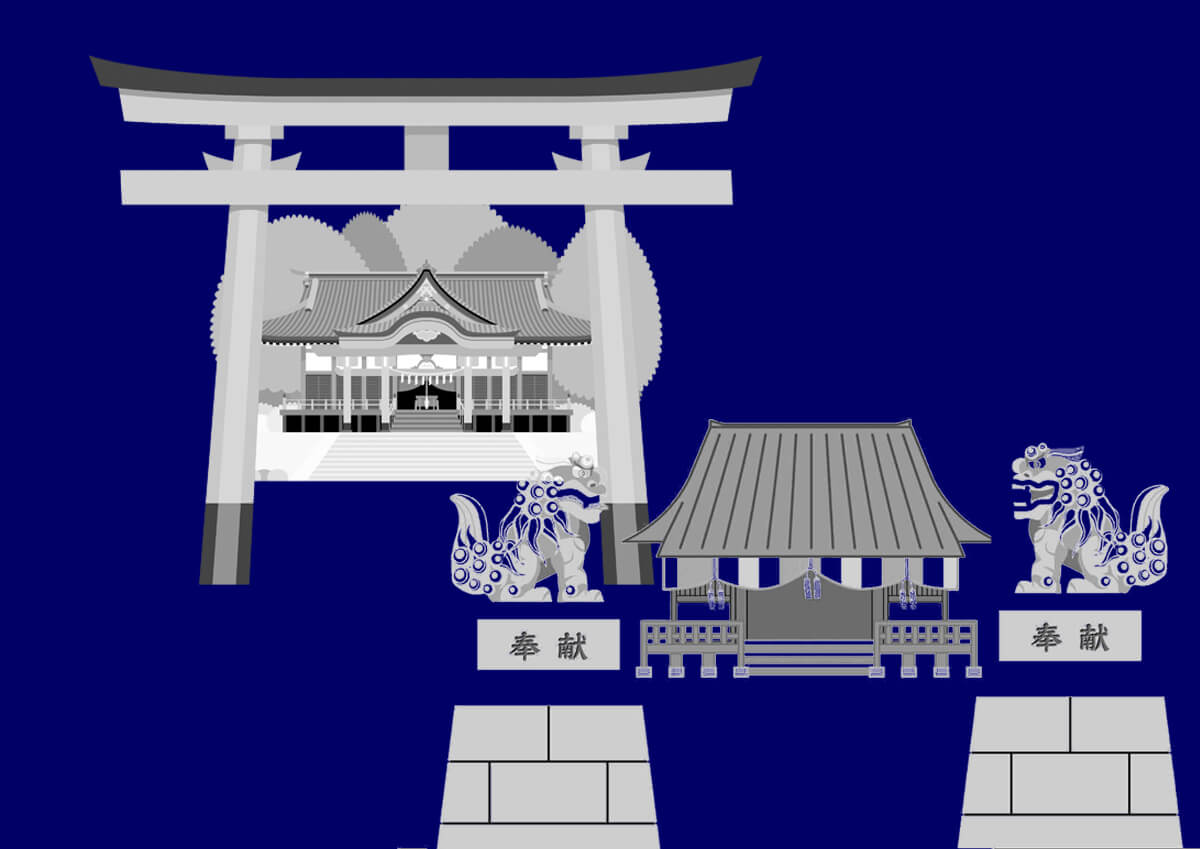Many Japanese people are comfortable with visiting shrines on New Year’s Day, holding a wedding at a Christian chapel, and having their funeral at a Buddhist temple. This may be incomprehensible to a foreign perspective. Japanese people accept various religions and customs with open arms. Shrines and temples are a part of life in Japan. Let’s take a look at the differences between them.
Origin of Shrines and Temples
The difference between shrines and temples lies in its origin
The Beginning of Shrines
In ancient times, Japanese people worshipped ‘eight million gods’.‘Eight million gods’ idiomatically means many gods.They believed gods were everywhere in the nature, such as mountains, rivers, trees, and stones, and also around them in everyday life, like fire and houses.People were protected by and shared their lives with the gods.Shinto shrines began as places to worship these gods.
Shinto shrines are characterized by the fact that there is no specific founder, scripture, doctrine, or precept.In Shinto shrines, the gods have no actual form or shape, and the objects of worship are mirrors and swords in which the spirits of the gods are said to dwell.Mirrors are major items of worship, because they reflect all things.As years passed by, shrines for historical figures were built.The benefits of each shrine differ, depending on the enshrined deity.Each shrine has its own specialties, such as prosperity in business, academic success, health, and relationship.
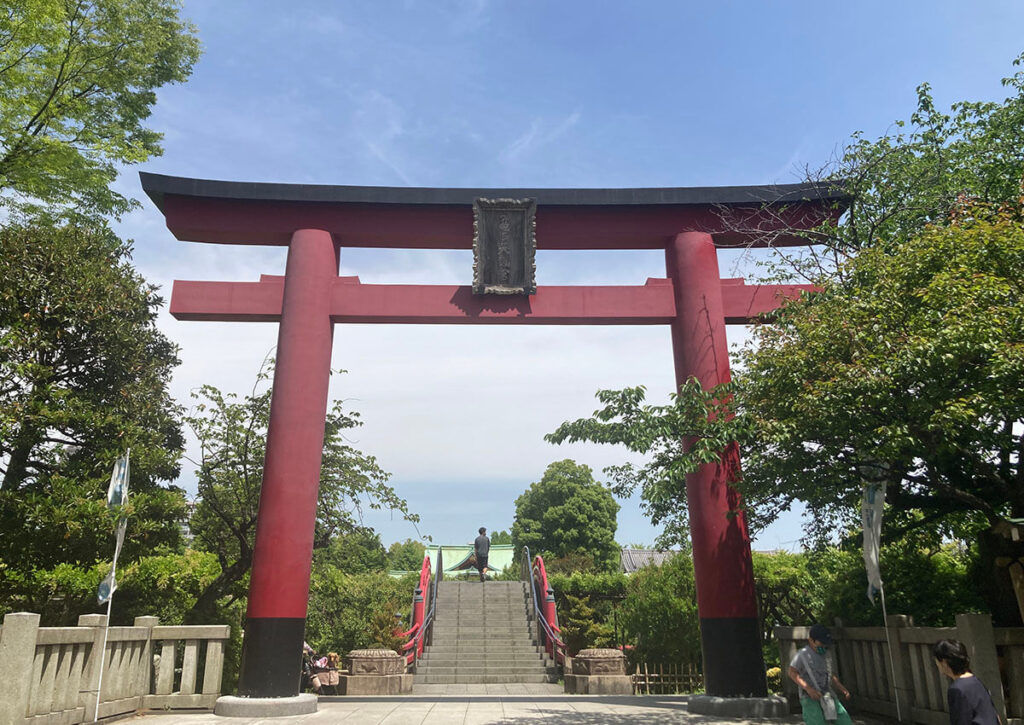
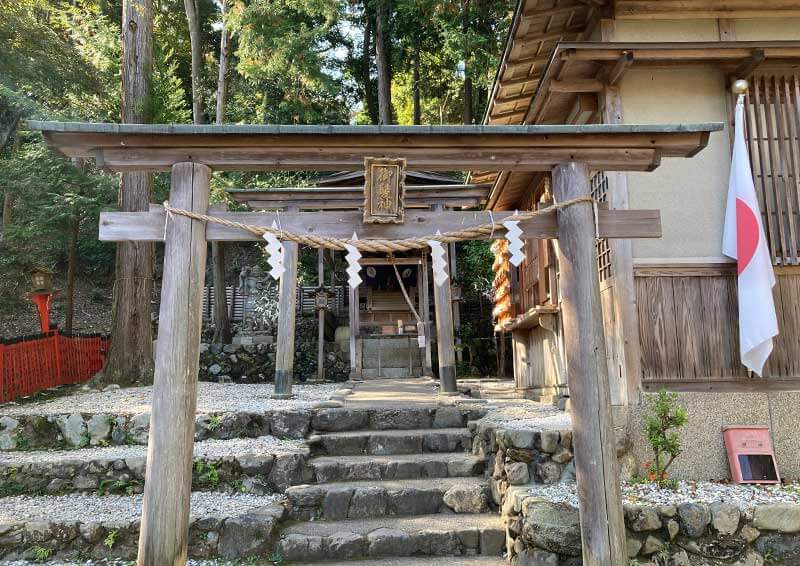
The Beginning of Temples
Buddhism was founded by Shakyamuni in India around 500 BC.It was introduced to Japan around the 6th century via China and the Korean Peninsula.Later, Prince Shotoku spread Buddhism in Japan. Many temples were built during Nara and Heian period, and Budda was worshipped alongside ancient Japanese gods.The temples that are familiar to Japanese people today originated as a foreign religion.
Shakyamuni is the name of the founder of Buddhism. Buddha does not refer to any specific person, but is a person who has attained enlightenment.
The object of worship in Buddhism is a statue of Buddha, but there was no statue of Buddha when Buddhism first began.After Shakyamuni’s death, people worshipped the stupa, which was a relic of Buddha’s bones. Later, in order to spread the Buddha’s teachings in a way that was easy to understand, Buddhist statues and pictures were created and worshipped.
As time went by the teachings of Buddhism spread, and leaders with different teachings appeared. This is how Buddhist sects began.
There are 13 traditional Buddhist sects. Including the other sects that have split off from each of them, there is said to be 56 sects. As time went by and peoples’ wishes changed, Buddhist statues of various roles were created.

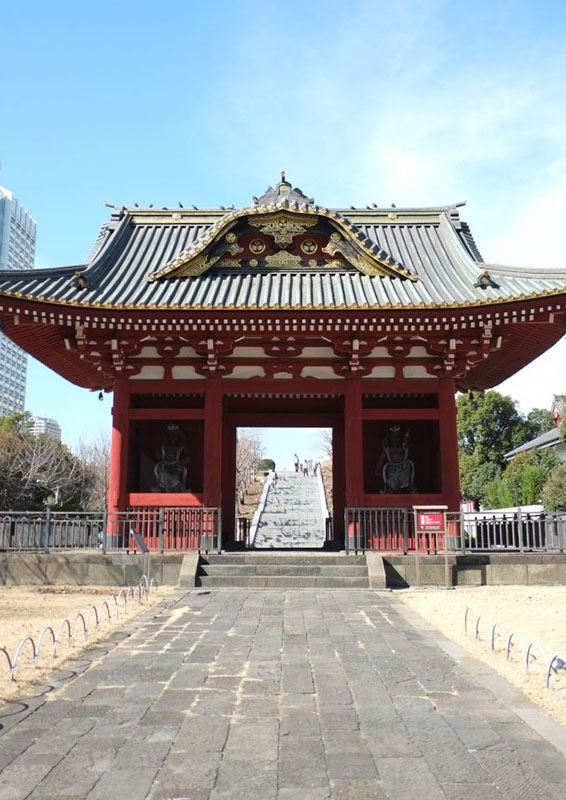
Shrine or Temple?
The difference between a shrine and a temple can be found at the entrance.For both, the entrances are boundaries to sacred places. Each has a certain configuration to the structures.Let’s look at some typical examples.
Torii, the Entrance to a Shrine
At the entrance of most shrines, there is a torii gate.
The torii is made of two pillars with a horizontal piece of wood called a kasagi, and the pillars are connected to each other by a piece of wood called a kan.
The origin of torii is unclear. There are several theories: some say it originates in Japanese myth, some say it came from China.
Torii can be divided into two main families.
1. The Shinmei family can be found at shrines that worship Amaterasu. They are erected directly from the ground and are simple in shape, straight and right-angled, both horizontally and vertically.
2. The Myojin family tori are at shrines that enshrines the gods in general. The design is streamlined and ornate, with warped kasagi and pillars set up on pedestals. In many cases, a plaque with the name of the
shrine is attached in the center.
Torii are made with various materials, such as stone, wood, or lacquered wood.
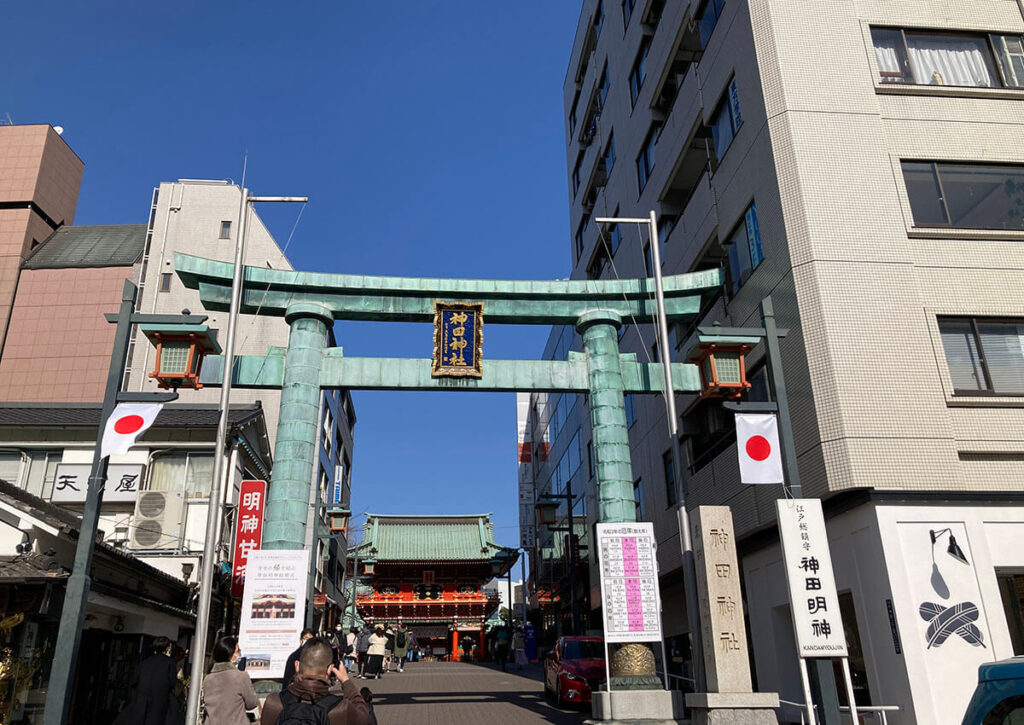
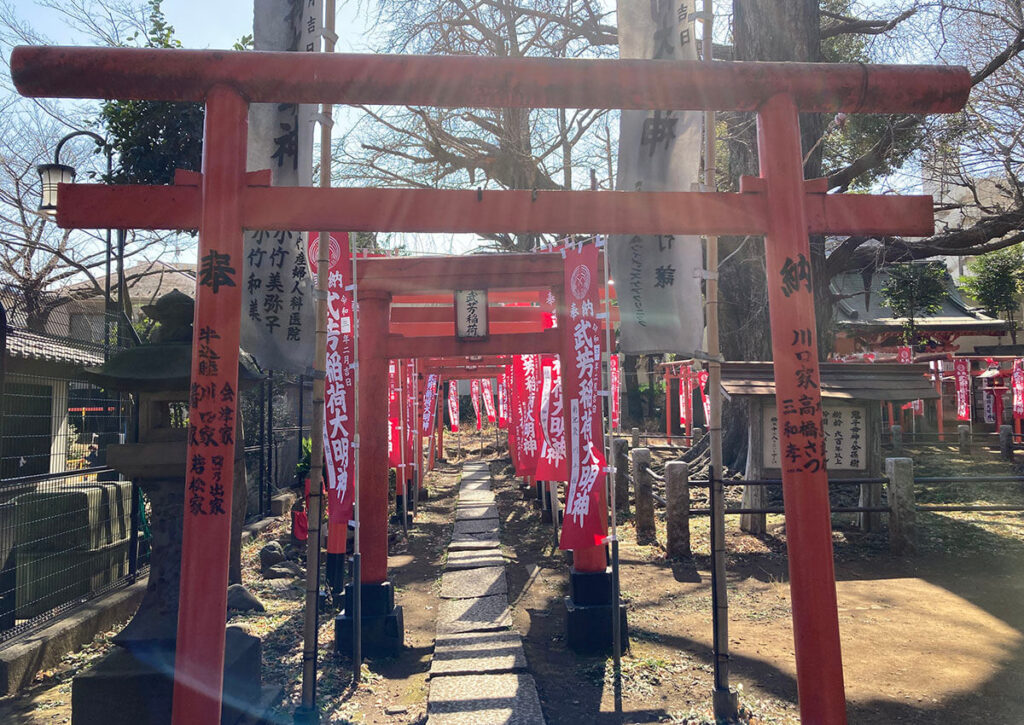
Common Structure of a Shinto Shrine
After going through the torii gate, there is an approach to the haiden, the hall of worship.
The middle of the path is for the gods to pass through, so it is best to walk a little closer to the edge of the path.
In front of the shrine, there is chozuya, a water fountain to purify your hands.
There is also a kagura hall for performing dances dedicated to the gods, and a shrine office for selling omamori (good luck charms) and omikuji (fortune).
In front of the haiden, there are komainu (guardian lion-dogs) to ward off evil spirits. The appearance of the komainu differs from shrine to shrine.They are popular among Japanese people, and you can see their pictures on Instagram and websites.
Sometimes, other animals, such as foxes, cows, deer, and rabbits play the same role.It’s fun to look for your favorite.The hall of worship is where the money box, or saisen box, is located.The main shrine where the deities are enshrined is located behind the hall of worship, so sometimes it is not visible.The area around the shrine is still home to large trees and local forest where the gods reside.
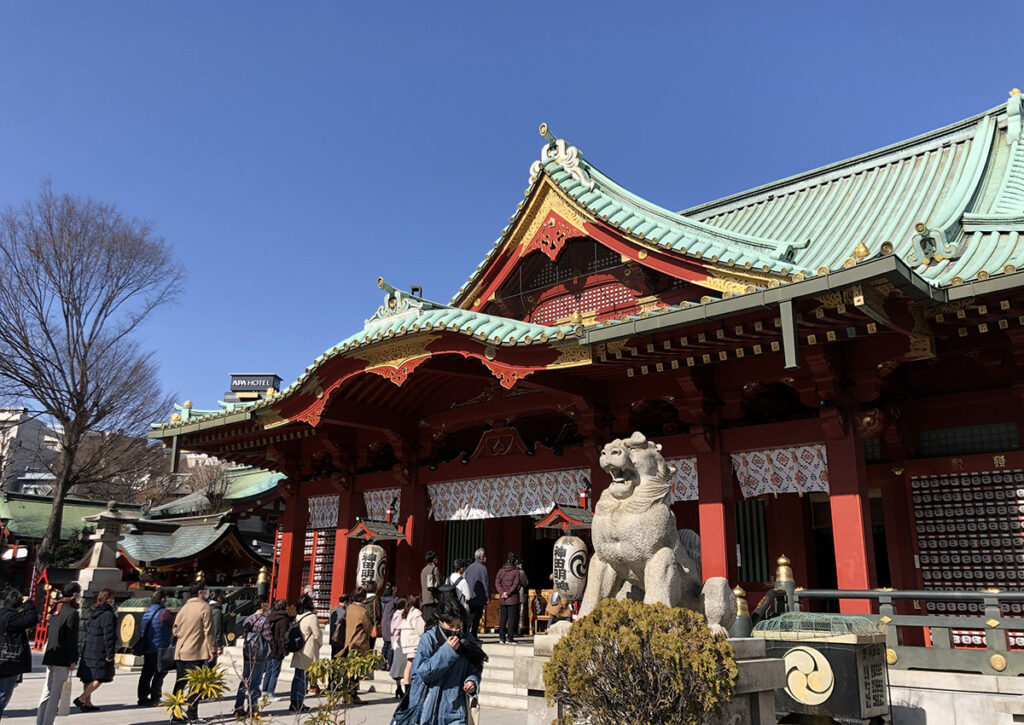
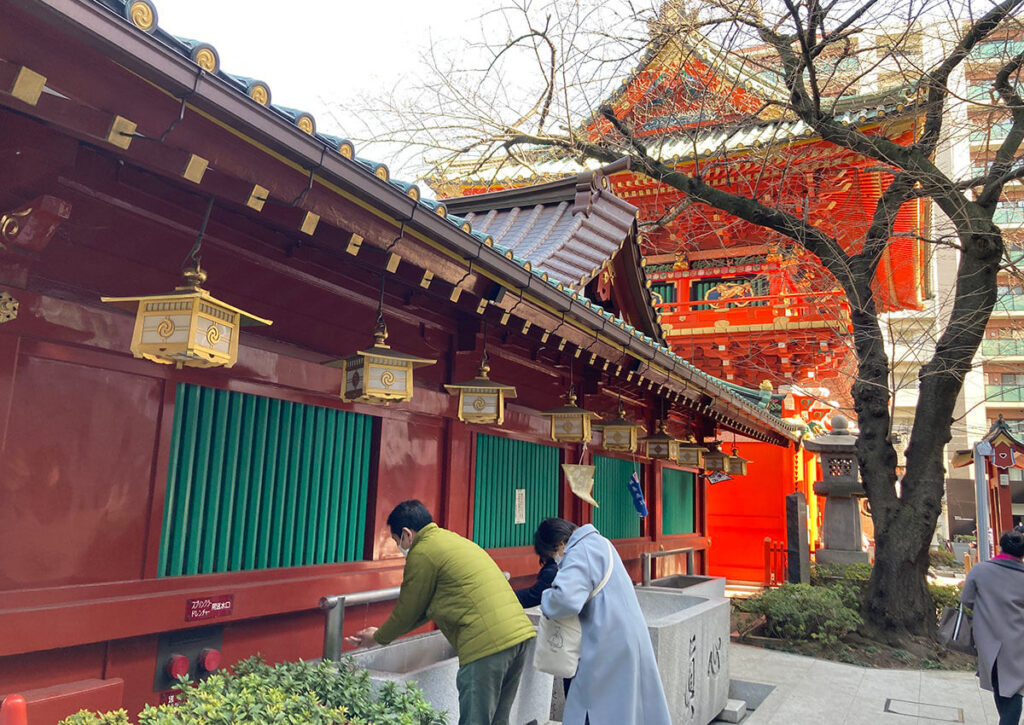
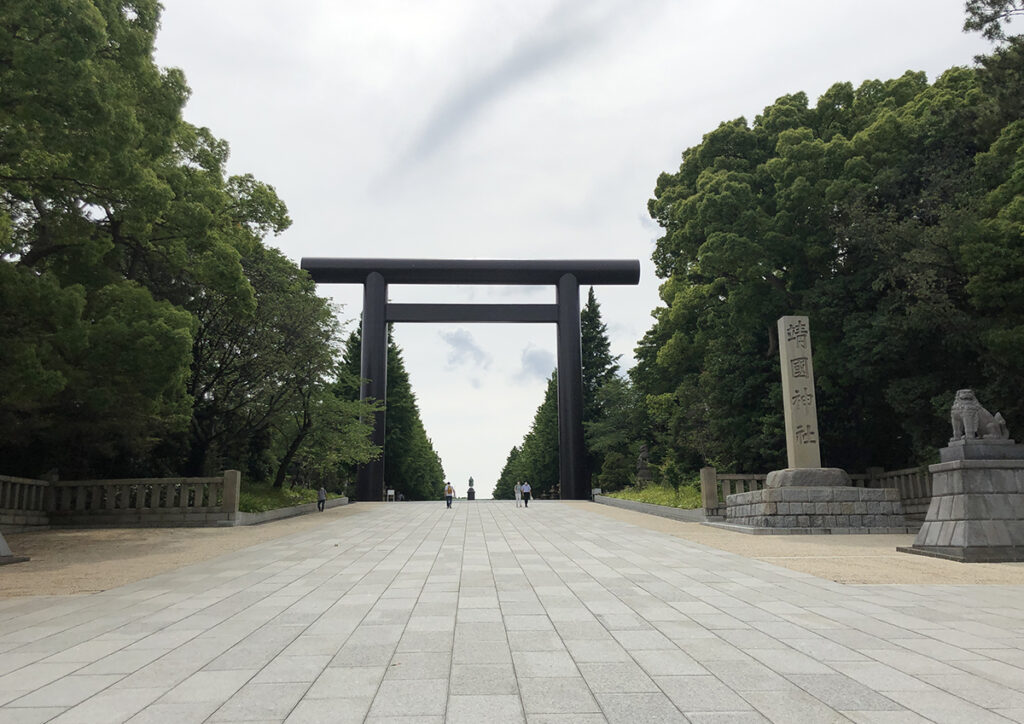
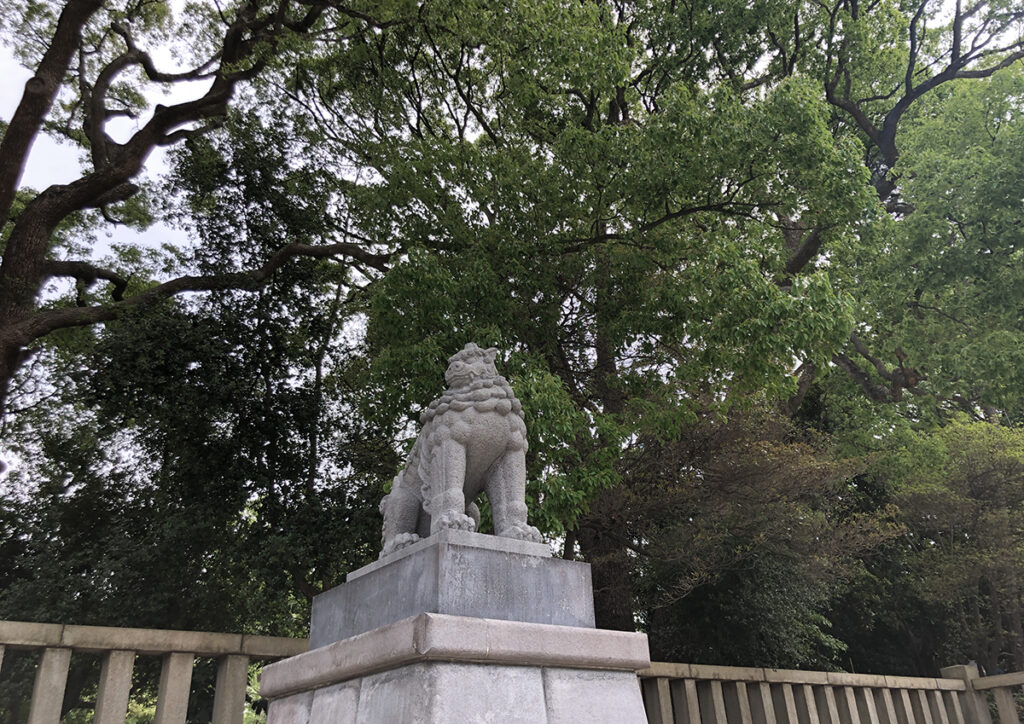
The Entrance to a Temple
The gate at the entrance of a temple is called sanmon.This was because in the old days, temples were built deep in the mountains. Hence the name san (mountain) mon (gate).At the sanmon of a large temple, there are two pairs of nio guardian statues on either side to ward off evil spirits, similar to the komainu at shrines.These are Vajrapani, the guardian deity of Buddhism.Their upper bodies are muscular, their eyes are wide open, and one statue has its mouth open and one has its mouth tied shut.
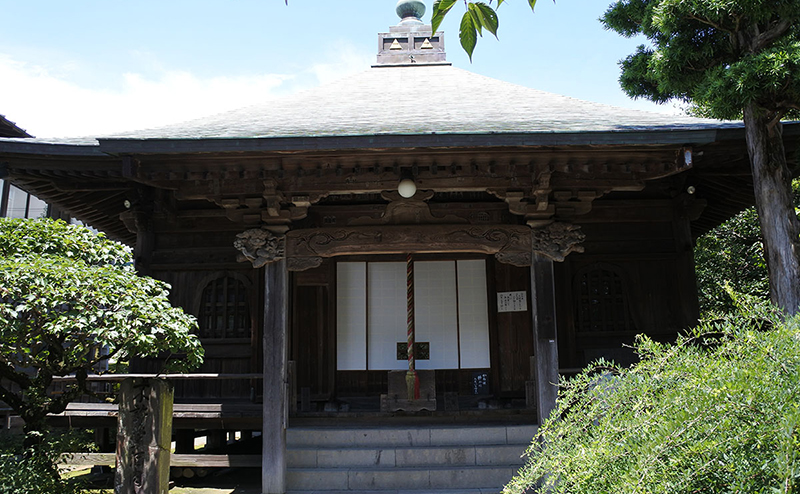
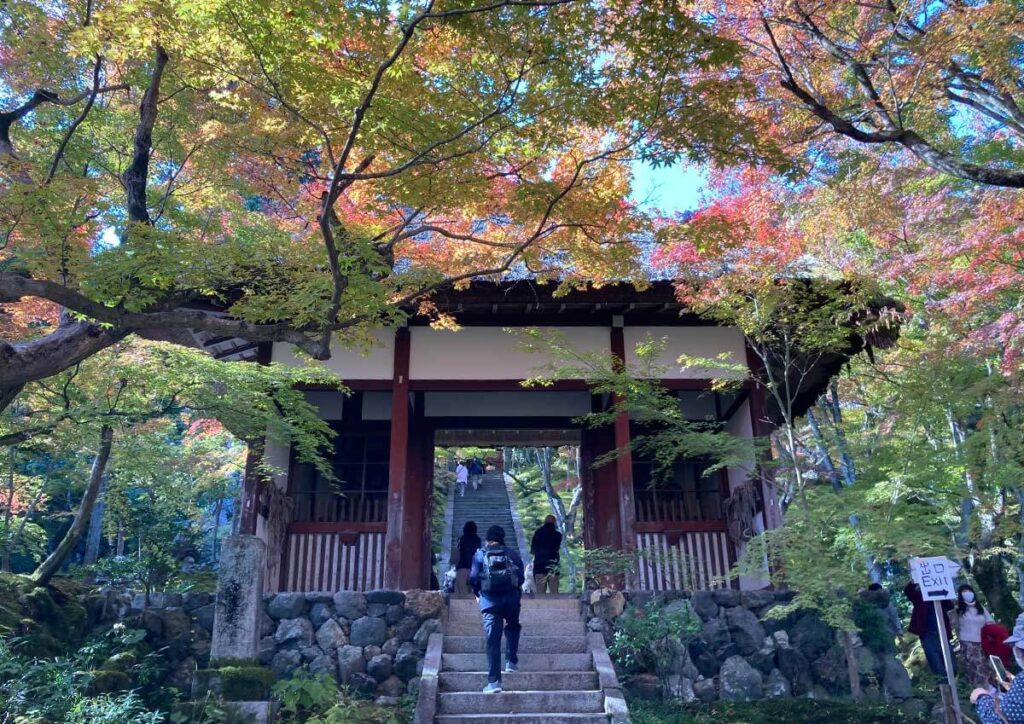
Common Structure of a Temple
Temple buildings vary greatly depending on the era in which they were constructed, their scale, and the sect. Temples are an attempt to create a visible world where Buddha lives. The buildings, gardens, ponds, and nature are used to express paradise.The structure of a large temple is called ‘shichido garan’ (seven hall complex).
1. Sanmon
2. The main hall, where the statue of Buddha is enshrined
3. Pagoda, where the bones of Buddha is stored. There are five-story pagodas and three-story pagodas
4. Lecture hall, a building for lectures and sermons on scriptures. To accommodate a large number of people, it is sometimes larger than the main hall
5. Repository, where sutras are stored
6. Belfry, a structure enclosing a hung bell. On New Year’s Eve, or December 31st, some temples let worshipers ring the bell.
7. Honbo, the building where the monks live
Due to lightning strikes, fires, and wars over the years, only a few temples have all the seven halls intact.Although temples are very familiar to Japanese people, during the Meiji era, there was a movement to demolish temples. Today, the missing torii gates and Buddhas without heads tell its history.

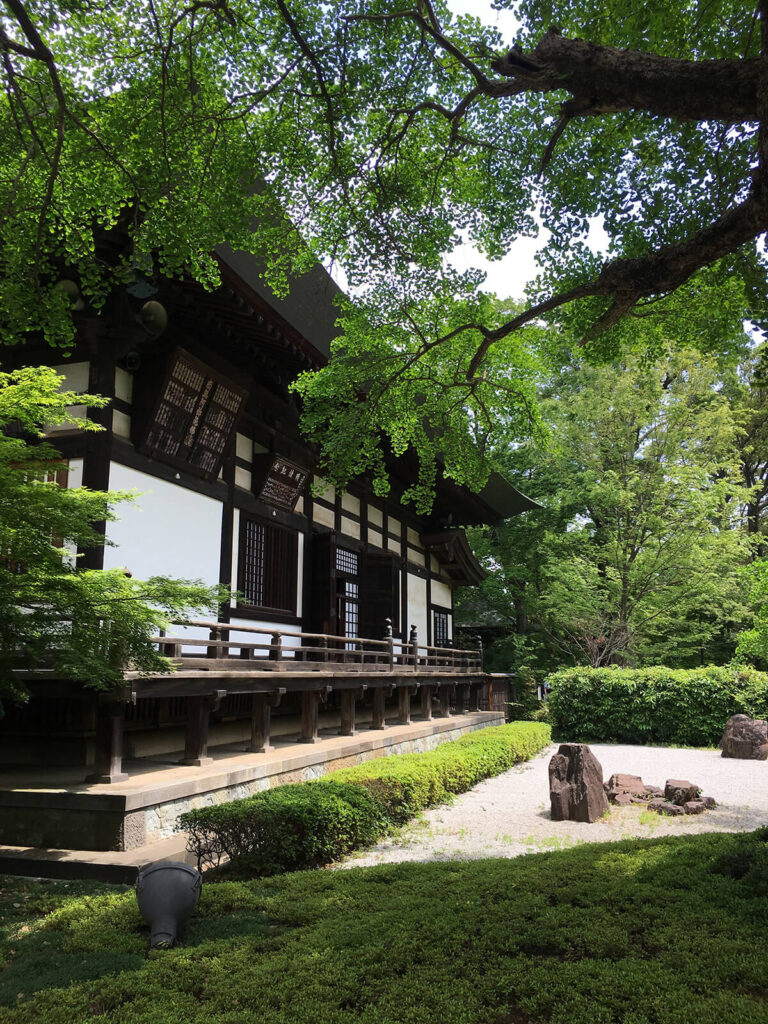
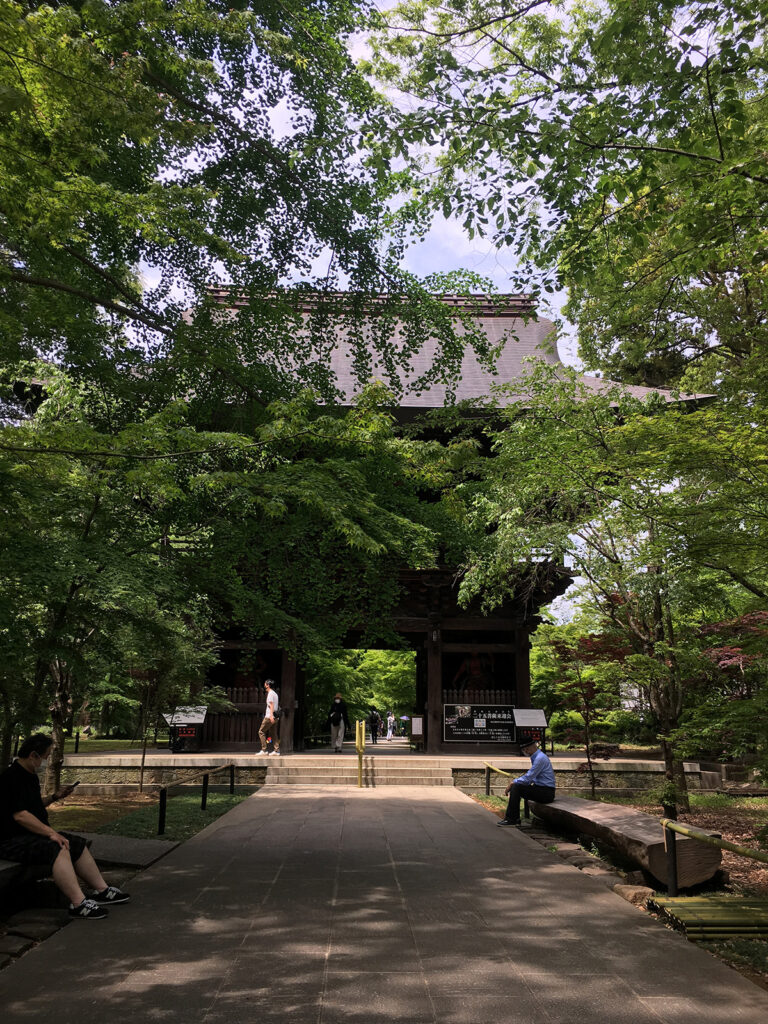
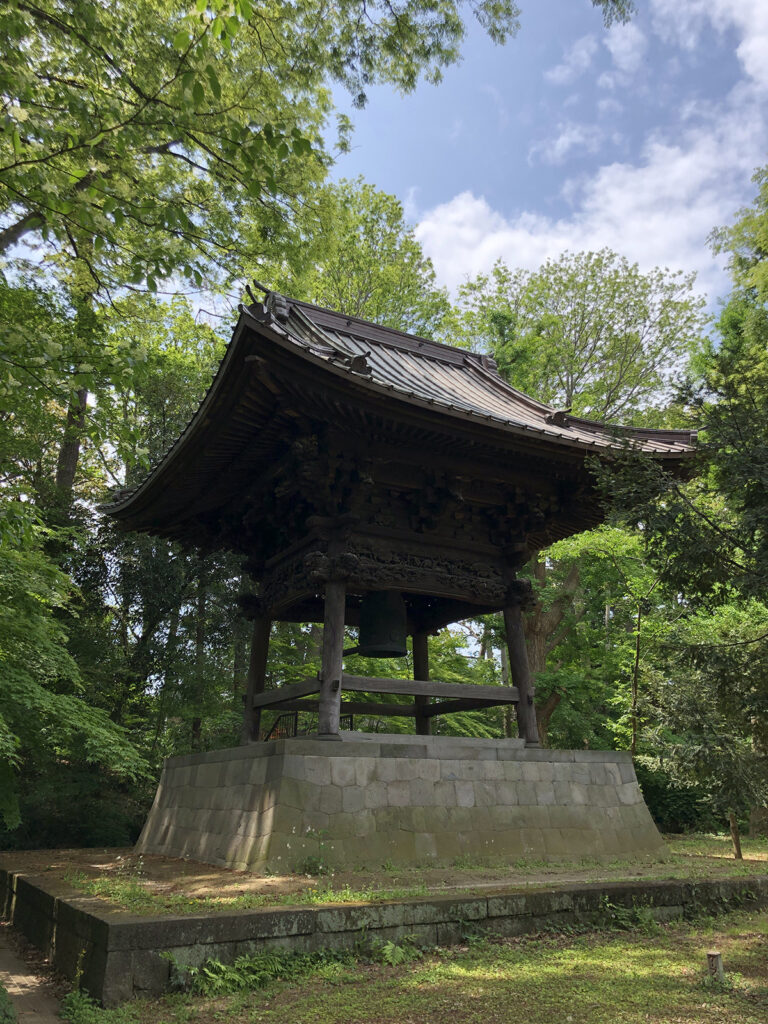
Let’s go visit the shrine and temple.
Shrines and temples can be visited in the same manner up to the point of worship. After making a monetary donation, it is time to visit the temple.
Please stop for a moment there. The way to visit shrines and temples is different.
Experience
Up to the point of prayer, the same etiquette applies to shrines and temples. After you put money in the money box, it’s time to pray
But please stop there for a moment. The method of worship is different between shrines and temples.
Entrance
Before passing through torii gates of shrines or sanmon of temples, bow once.On your way back after paying homage, turn around and bow again.
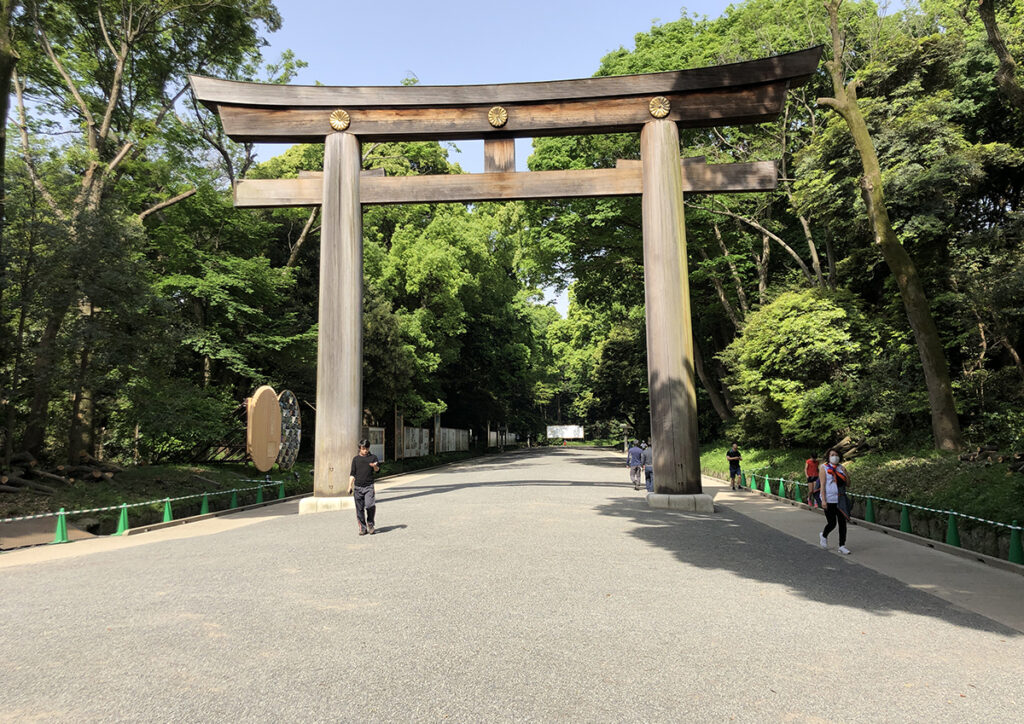
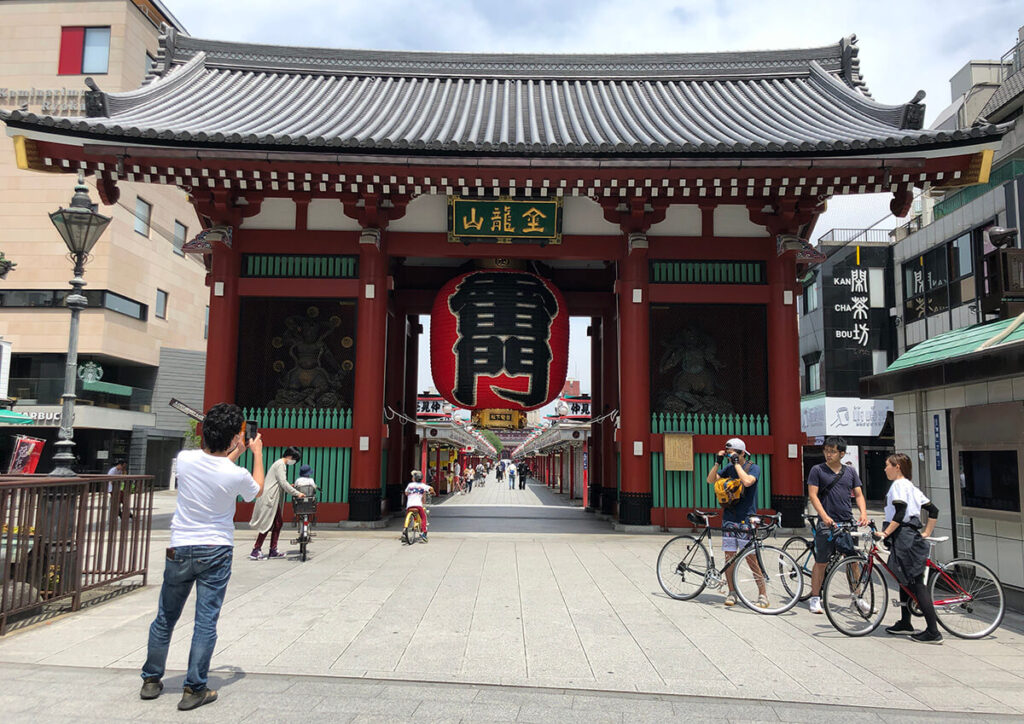
The Approach
The middle of the approach to both shrines and temples is pathway for the gods and Buddha, so walk a little closer to the edge.
Chozuya
Both have a purifying place called chozuya to wash the body and soul.
Make sure to have your handkerchief or towel with you, as you will purify your hands with a ladle.
1. Hold the ladle in your right hand. Fill the ladle with water and pour it into your left hand to purify it.
2. Change the ladle to your left hand and pour the water into your right hand to purify it.
3. Hold the ladle in your right hand again, catch the water in your left hand, and lift your hand up to your mouth to wet it.
4. Finally, cleanse the ladle with the remaining water. Hold the ladle at an angle and let the remaining water run down to the handle. Gently, so as not to get your clothes wet.
5. Return the ladle to its original place. To be polite, bow once.
Paying Homage – Difference between Shrines and Temples
Finally, it’s time to pray. Put money in the saisen box.Whether shrine or temple, pray with a peaceful and quiet mind. The main difference between shrines and temples is whether or not you clap your hands.At temples and shrines, you pay homage in a different way.
Shrine
Bow twice, clap twice, bow once (The numbers differ depending on the shrine. Follow directions at the place of worship)
1. If there is a bell, ring it.
2. Bend your upper body twice and bow.
3. Clap your hands twice, put your palms together and close your eyes quietly. Express your gratitude or wishes to the gods in your mind.
4. Finally, bow once more.
Temple
Gassho – put your palms together
Quietly close your eyes, bow your head slightly, and put your palms together in front of your chest to express your wish. Bow lightly.
Gassho is said to be a way to become one with the Buddha by bringing your hands together.
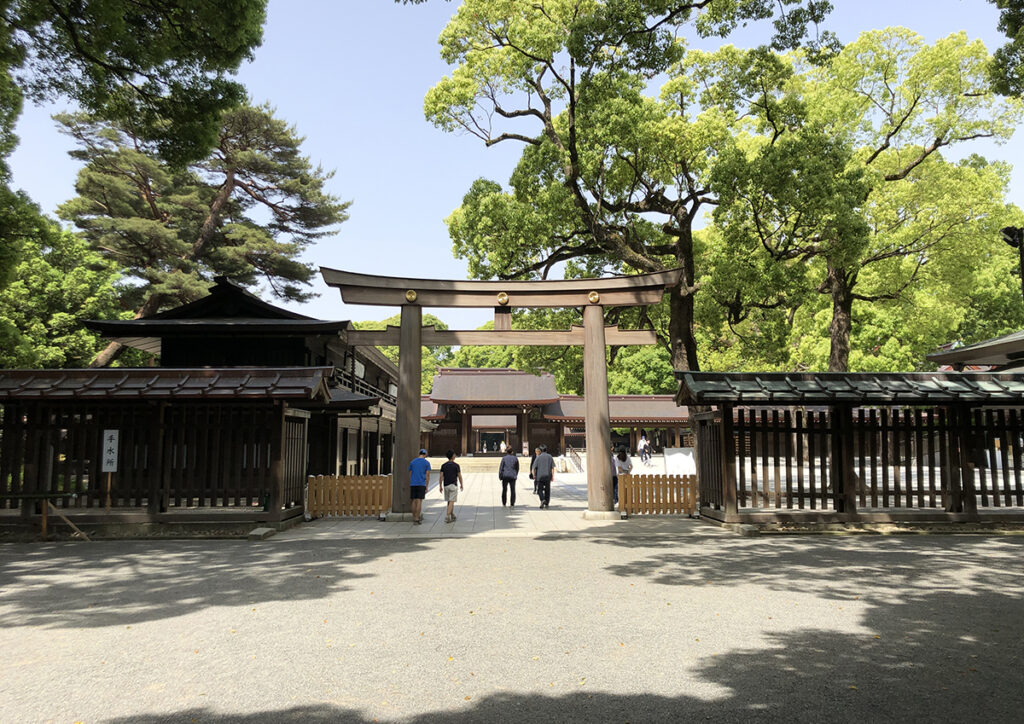
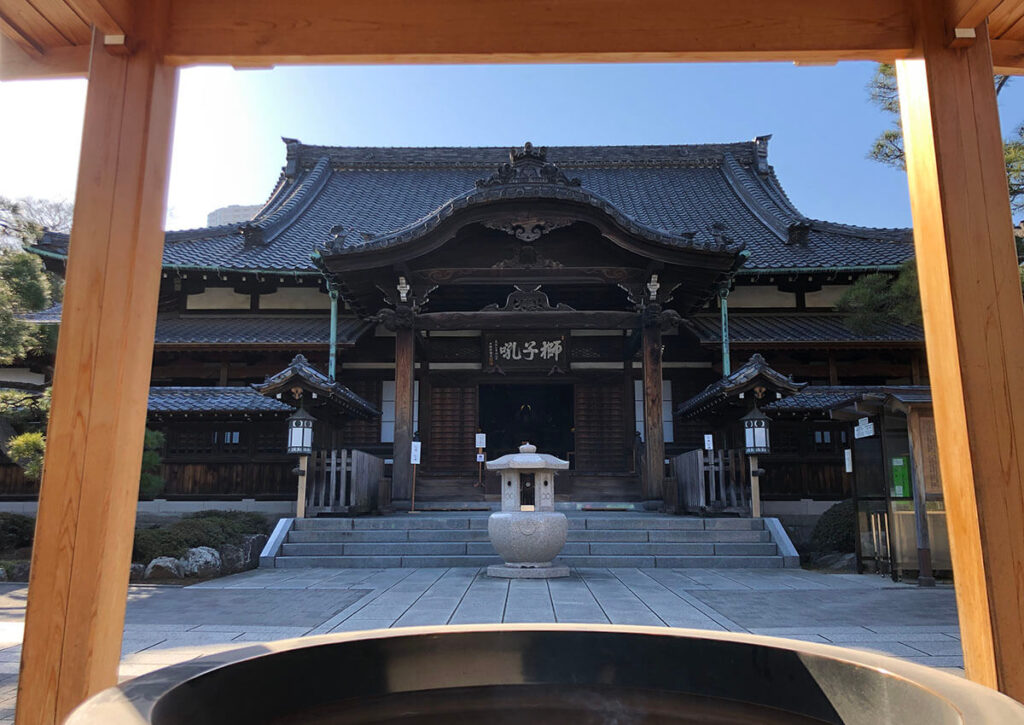
After Paying Homage of Shrines and Temples
Goshuin (Red Seal Stamp)
You can receive a goshuin to mark your visit to a shrine.At temples, a goshuin is generally stamped with the name of the shrine and the date of visit. At temples, they are generally stamped with the name of the principal image, the temple name, and the date of visit. Unlike a commemorative stamp, a goshuin is a proof that you have visited the shrine, and you will need a special notebook called a goshuincho.
Some temples and shrines have their own original goshuincho, so be sure to check them out.
Omamori
Some shrines and temples sell omamori. An omamori is a small bag containing an item, such as a bill, which is believed to possess the power of the gods. There are various types of omamori, such as those for schoolwork, wealth, traffic safety, health, safe delivery, and protection from bad luck. Choose the one that best suits you and carry it or keep it at home for safekeeping.The omamori may make your wish come true.
Omikuji
It is said that if you draw an omikuji after visiting a shrine, you can receive advice from the gods or Buddha.There are various ways to get omikuji, such as drawing a paper from a box yourself, or shaking a tube and getting an omikuji from the number on the stick that comes out.
The order of good luck is daikichi, kichi, chukichi, shokichi, suekichi, kyo. Rather than being happy or upset about the result, see if you can find a message in the result. You can take the omikuji home or tie it in a designated place.


